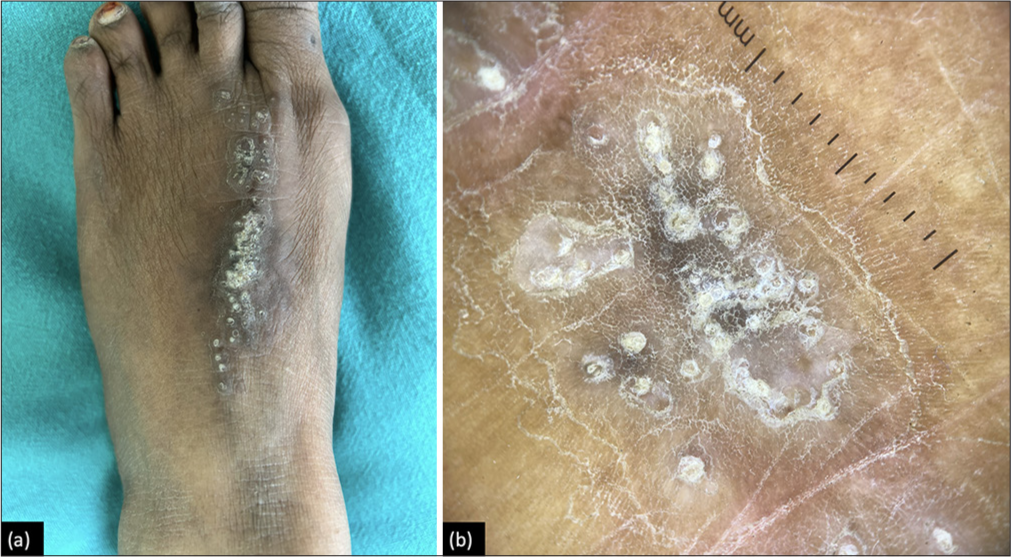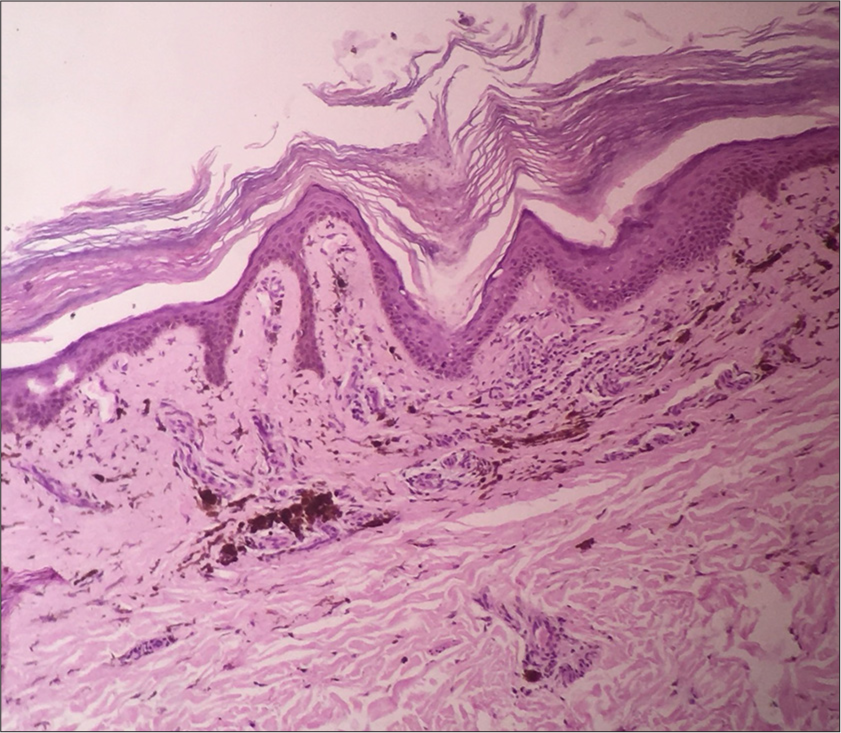Translate this page into:
Porokeratotic eccrine ostial and dermal duct nevus

*Corresponding author: Ishan Agrawal, Department of Dermatology, Maulana Azad Medical College, New Delhi, India. ishanagrawal1995@gmail.com
-
Received: ,
Accepted: ,
How to cite this article: Agrawal I, Tyagi H, Shetty B. Porokeratotic eccrine ostial and dermal duct nevus. CosmoDerma. 2025;5:44. doi: 10.25259/CSDM_5_2025
A 32-year-old female presented with a 10-year history of pruritic punctate papules on the dorsum of her left foot arranged in a linear pattern [Figure 1a]. Dermoscopic examination revealed a well-demarcated irregular scaly rim encircling the lesions, multiple pits filled with comedo-like keratin plugs, and diffuse white dots in the inter-pit regions, characteristic of porokeratotic eccrine ostial and dermal duct nevus (PEODDN) [Figure 1b]. Biopsy findings were consistent with the diagnosis [Figure 2].

- (a) Clinical Image. Multiple pitted papules are arranged linearly over the dorsum of the left foot. (b) Dermoscopy showing a well-demarcated irregular scaly rim encircling the lesion, multiple pits filled with comedo-like keratin plugs, and diffuse white dots in between the pits. (DermLite DL4, ×10, polarized).

- Histopathology showing hyperkeratosis, acanthosis with parakeratotic invaginations (Cornoid lamella) in the epidermis. Dermis showing mature eccrine sweat glands in the mid and lower dermis underlying the porokeratotic column (hematoxylin and eosin, ×100).
PEODDN is a rare disorder primarily involving eccrine ostia and ducts. While typically congenital, it can also present later in life. This condition arises from clonal keratinocyte proliferation, resulting in obstruction of eccrine ducts. It can also rarely involve the hair follicles and can be seen in hair-bearing areas. Management options include topicals such as keratolytics, retinoids, calcipotriol, and anthralin. Other options include surgical excision and UltraPulse carbon dioxide laser. Recognizing the clinical and dermoscopic features of PEODDN is crucial for an accurate diagnosis. Although chronic in nature, early intervention can improve patient outcomes and mitigate symptoms.
Ethical approval
Institutional Review Board approval is not required.
Declaration of patient consent
The authors certify that they have obtained all appropriate patient consent.
Conflicts of interest
There are no conflicts of interest.
Use of artificial intelligence (AI)-assisted technology for manuscript preparation
The authors confirm that there was no use of artificial intelligence (AI)-assisted technology for assisting in the writing or editing of the manuscript and no images were manipulated using AI.
Financial support and sponsorship: Nil.






